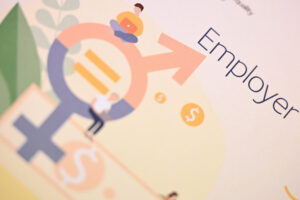The latest Labour Account figures from the Bureau of Statistics reveal that at the end of last year a record percent of people were working more than one job.
The Centre for Future Work’s Greg Jericho has analysed the figures and found an abnormally large number of new jobs since the pandemic have been in secondary jobs.
In the December quarter of 2021 a record 6.4% of employees were working multiple jobs
This unfortunately is not a pandemic-led one-off but part of a now 6-7 year trend that finds workers who are facing fewer hours, more insecure work, and getting pay rises that barely keep up with the cost of living being forced to seek another job to pay the bills.
See Greg’s full commentary in The Guardian: “Rise in hours worked signals post-lockdown recovery, but more people have multiple jobs than ever“
Between the Lines Newsletter
The biggest stories and the best analysis from the team at the Australia Institute, delivered to your inbox every fortnight.
You might also like
Analysis: Will 2025 be a good or bad year for women workers in Australia?
In 2024 we saw some welcome developments for working women, led by government reforms. Benefits from these changes will continue in 2025. However, this year, technological, social and political changes may challenge working women’s economic security and threaten progress towards gender equality at work Here’s our list of five areas we think will impact on
Dutton’s nuclear push will cost renewable jobs
Dutton’s nuclear push will cost renewable jobs As Australia’s federal election campaign has finally begun, opposition leader Peter Dutton’s proposal to spend hundreds of billions in public money to build seven nuclear power plants across the country has been carefully scrutinized. The technological unfeasibility, staggering cost, and scant detail of the Coalition’s nuclear proposal have
Go Home On Time Day 2025. As full timers disconnect, part timers are doing more unpaid overtime
New research by the Centre for Future Work at The Australia Institute has revealed a disturbing new twist when it comes to unpaid overtime in Australia.



